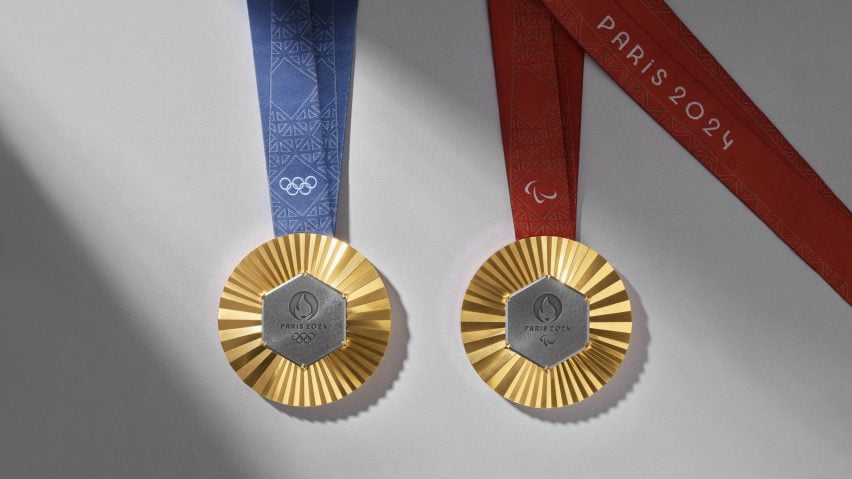
Fragments of Eiffel Tower adorn Paris 2024 Olympic medals
French jeweller Chaumet has unveiled the Paris 2024 Olympic and Paralympic medals, inset with real pieces of the Eiffel Tower to give athletes an "unforgettable souvenir" of the games.
Much like a piece of jewellery, each medal features a claw setting on its rear face, which instead of a gemstone holds a hexagonal slice of iron from Paris's most iconic monument.
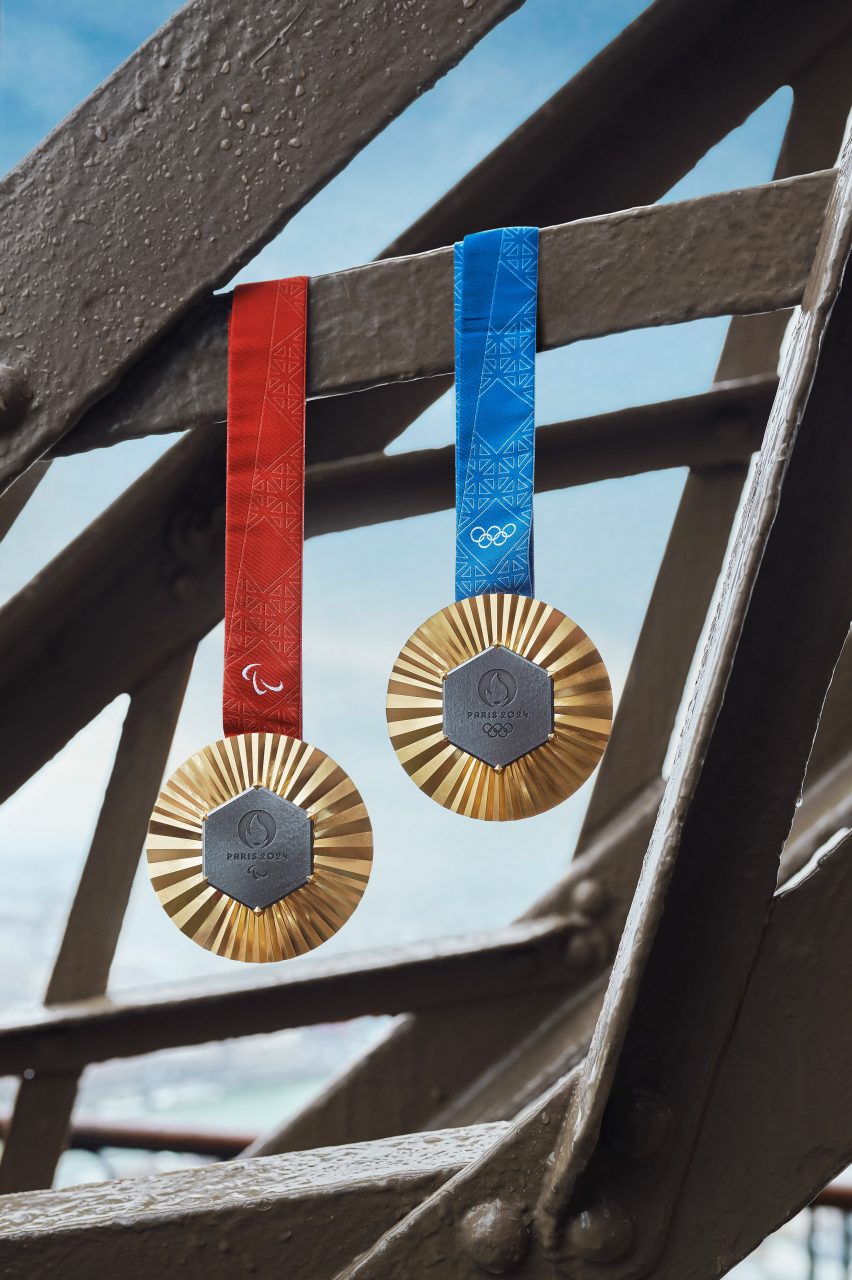
Removed during various renovation works over the course of the 20th century, the scrap metal was preserved by the Société d'Exploitation de la Tour Eiffel before being given a new purpose for the Paris 2024 games.
"We wanted these medals to be truly unique, to bear the Paris 2024 signature," said Tony Estanguet, president of the organising committee for this year's games.
"To achieve this, we married the strongest symbol of the Games, the medal, with the ultimate symbol of Paris and France around the world, the Eiffel Tower."
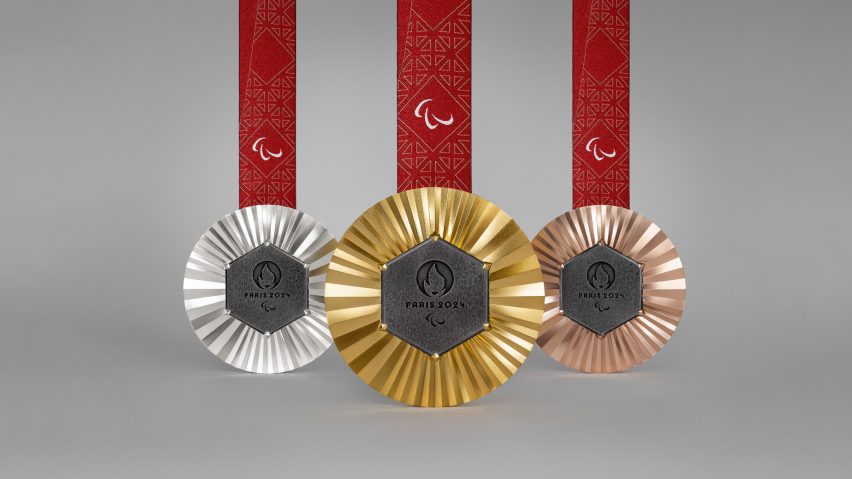
For Paris 2024, the Paralympic Games will use the same torch, emblem, mascots and stadiums as the Olympics, in a bid to promote greater parity between the events.
With this aim, the medals for both games will also share a common look courtesy of Chaumet – the first jeweller ever to be entrusted with their design.
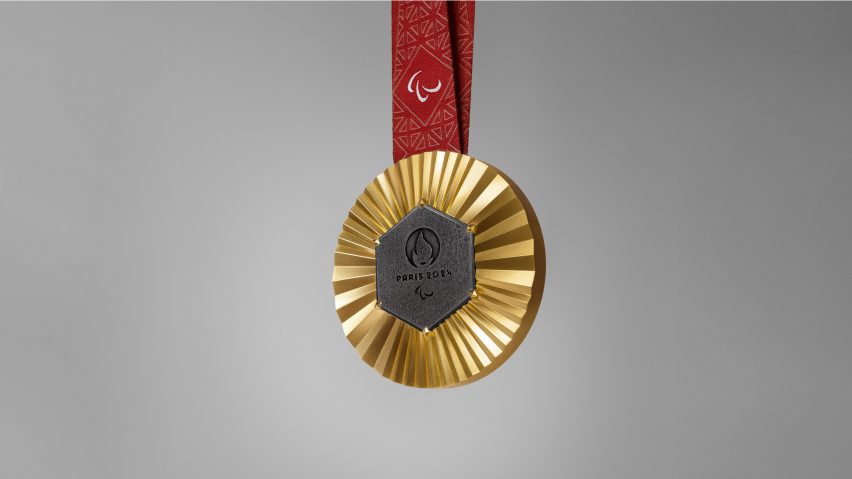
On their reverse side, the medals are stamped with a three-dimensional radial pattern that frames the piece of cast iron at its centre.
These Eiffel Tower offcuts have been stripped of their original brown paint and embossed with the emblem of the Paris 2024 Olympic or Paralympic Games.
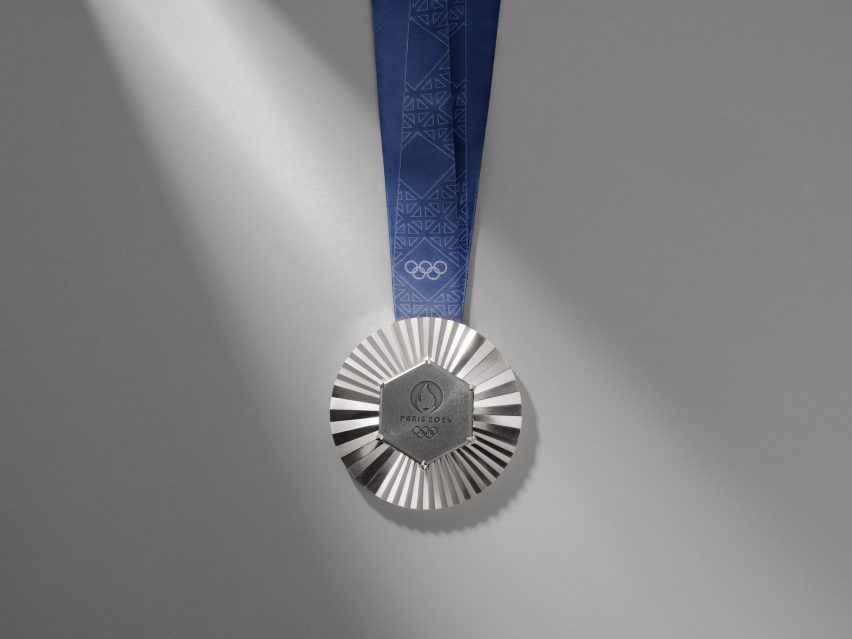
"The Eiffel Tower, the daughter of Paris and site of major world events, had to be used to provide athletes with an unforgettable souvenir of Paris," said Jean-François Martins, President of the Société d’Exploitation de la tour Eiffel.
"With this unique metal from the Eiffel Tower, this medal has a historic character."
Their hexagonal shape is a nod France's affectionate nickname l'hexagone, owing to its roughly six-sided shape.
Drawing on traditional jewellery-making techniques, the iron is held in place by six claw settings – one on each corner – shaped in a Clous de Paris pattern commonly used on watch dials.
Where the Olympic and Paralympic medals differ is in the colour of their ribbons – blue and red respectively – as well as the design of their front faces.
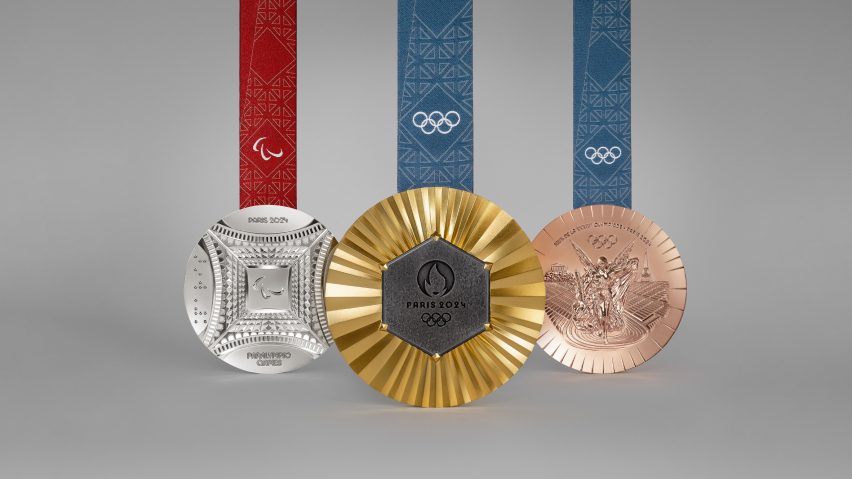
Medals for the Olympics feature Nike, the Greek goddess of victory, standing in front of the Panathinaikos Stadium, which has featured on all medals since 2004.
Chaumet's twist on the traditional motif sees the stadium flanked by the Athenian Acropolis on one side and the Eiffel Tower on the other.
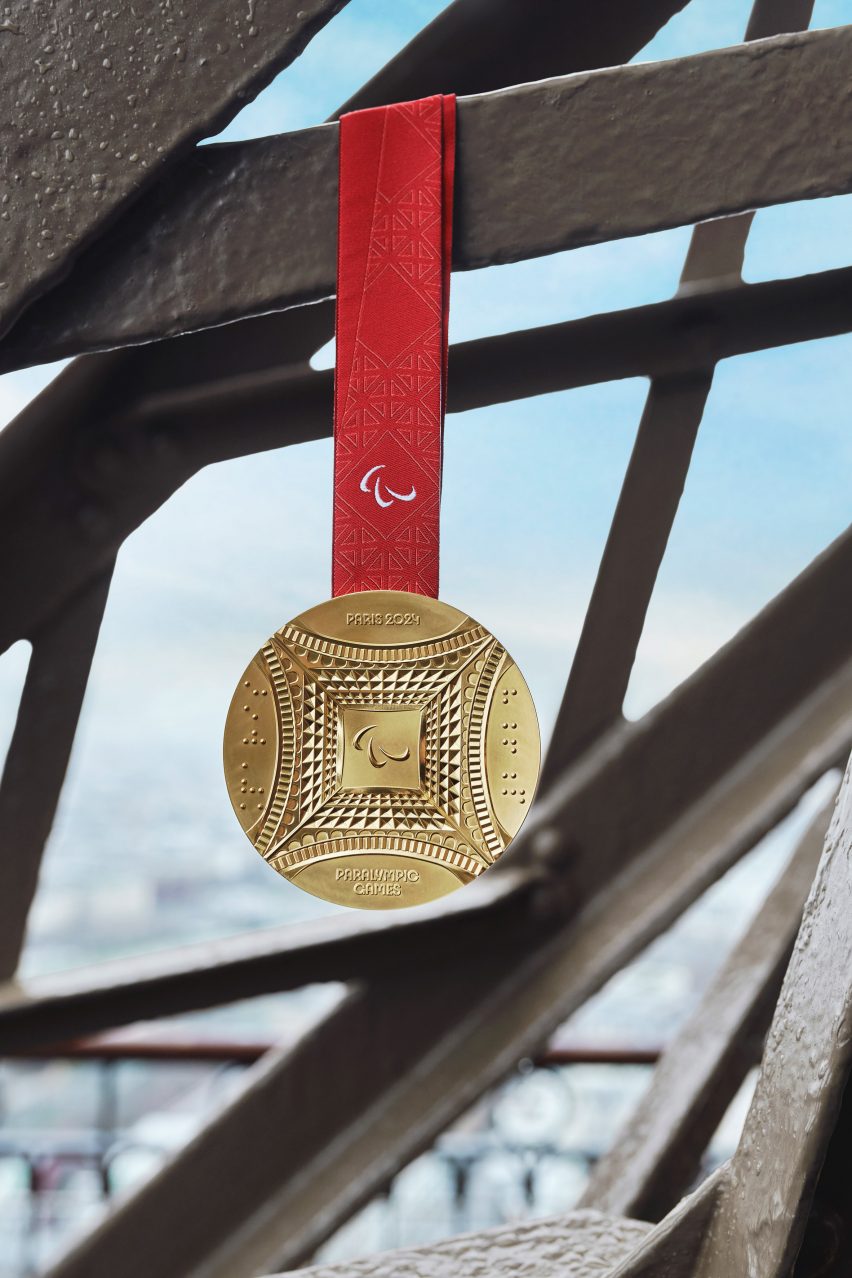
For the Paralympic medals, the design team had the freedom to take a more experimental approach, embossing them with a graphic pattern that recreates a view of the Eiffel Tower from below.
They also feature several accessible design details, including the words Paris and 2024 written in universal Braille, which was invented by Frenchman Louis Braille in 1824.
Lines engraved around the edge of the medals help athletes to distinguish the medals by touch – from one line for gold to three lines for bronze.
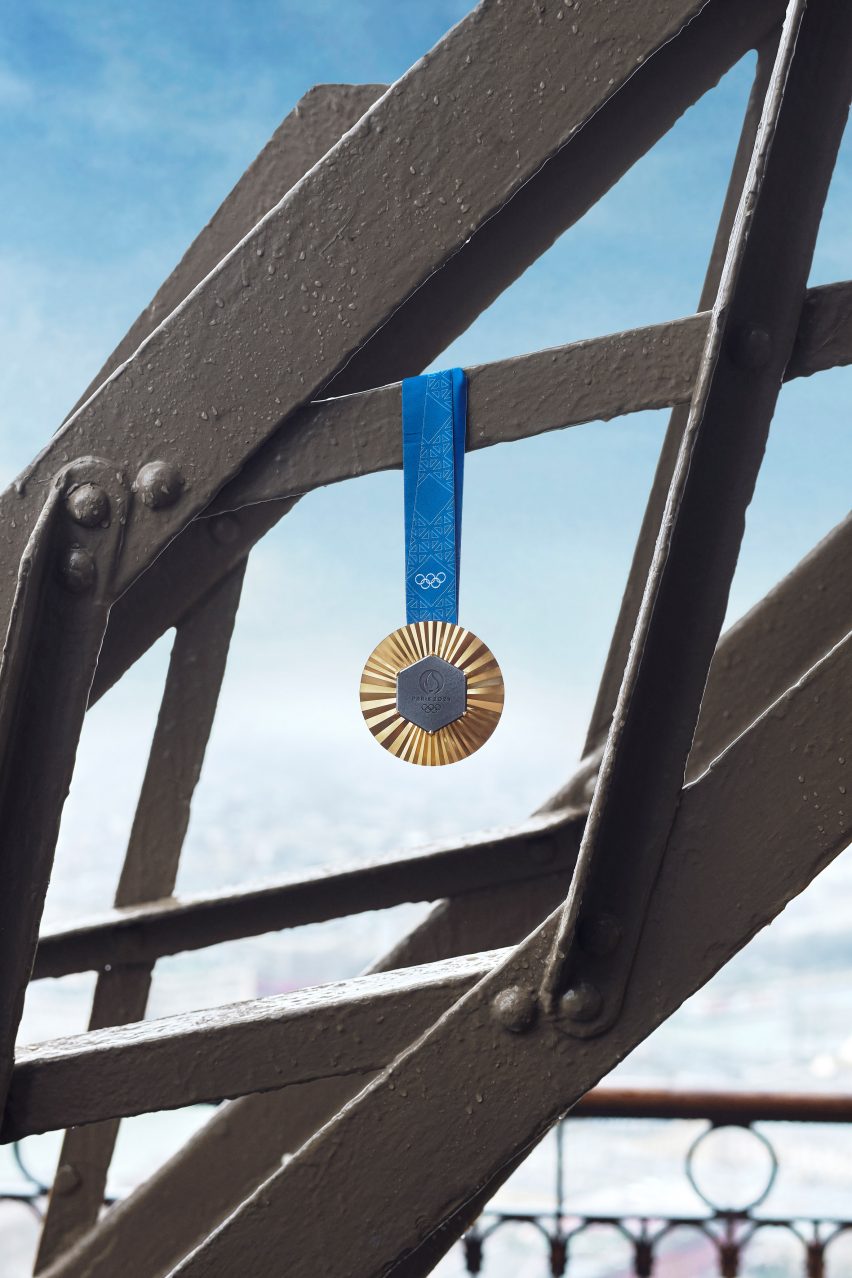
Another ode to the Eiffel Tower comes in the form of the graphics on the ribbons, suggesting the crosspieces of the structure and suggesting the landmark's iconic shape when the two sides are brought together.
The medals were designed at Chaumet's Paris workshop on the Place Vendôme and made nearby on the other side of the Seine at France's official mint, the Monnaie de Paris, which 100 years ago produced the medals for the Paris 1924 Olympics.
The gold and silver medals are made using metal certified as 100 per cent recycled by the Responsible Jewellery Council (RJC), while the bronze is made using scraps from the Monnaie de Paris's own production.
With the 2024 Olympic and Paralympic Games set to kick off on 26 July, preparations are currently ramping up in the French capital.
Only one permanent venue – a timber aquatic centre by VenhoevenCS and Ateliers 2/3/4/ – is being constructed for the event, in a bid to limit its climate footprint.
All other sports will be hosted in existing and temporary stadiums, including a beach volleyball court that will be installed at the foot of the Eiffel Tower.